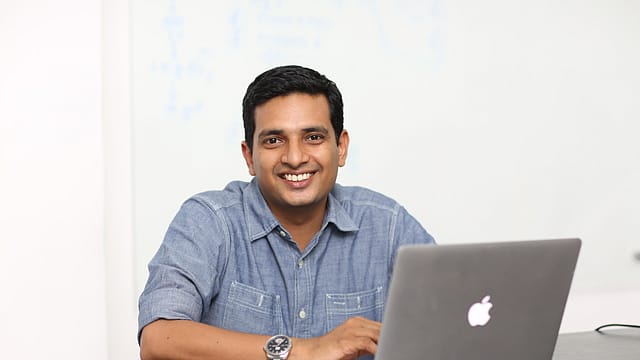E-learning app Toppr eyes 8 million users in a year
ADVERTISEMENT

Edu-tech company Toppr recently raised Rs 15.5 crore from Alteria Capital, after raising Rs 45 crore from SAIF Partners, Helion Ventures and FIL Capital Management earlier. Co-founder and CEO Zishaan Hayath speaks to Fortune India about the strategy of the company going forward, the milestones it hopes to achieve and the road to profitability. Edited excerpts:
How has Toppr grown since its launch?
We started Toppr in 2013 with just the two founders and two employees. The aim was to build an adaptive learning app for school students. We started off with a focus on Classes XI and XII, and built an adaptive practice module for three subjects—Maths, Physics and Chemistry. We later added Biology and included Classes VIII-X. Then we expanded to multiple boards and added Social Studies and Commerce. So we went from just two grades, three subjects, and one board, to eight grades (Class V-XII), 20 subjects and 20 different school boards across India today.
We also kept expanding the modules available for students; our goal was to not only make it adaptive but also comprehensive. We offer video lectures, “learning through practice” modules, tests and also a “doubts” module where a tutor is available to answer any questions.
In terms of team strength, currently we have around 800 people across teams in India; this includes 250 people at our head office in Mumbai, which could go up to 300-400 in the next three years.
January 2026
Netflix, which has been in India for a decade, has successfully struck a balance between high-class premium content and pricing that attracts a range of customers. Find out how the U.S. streaming giant evolved in India, plus an exclusive interview with CEO Ted Sarandos. Also read about the Best Investments for 2026, and how rising growth and easing inflation will come in handy for finance minister Nirmala Sitharaman as she prepares Budget 2026.
What are the milestones you hope to achieve in terms of growth?
We currently have 4 million registered users on the platform, including the app and the website. The figure was 2 million last year, so it has doubled in one year. I think we will touch 7-8 million users in the next 12 months. In terms of time spent by students on our platform, we’re seeing 90 minutes daily per average user, which is far ahead of the competition.
Our revenue has been growing at four times each year for the last three years, and we think it can continue to grow at three times each year for the next three years.
The e-learning space has been heating up with several players entering the market and rising competition. How do you differentiate Toppr from the rest?
Our plan comprises three strategies: The first is to offer a customised, dynamic syllabus for students. For a student, it doesn’t matter if you offer separate programmes for CBSE and IIT; they care about what they want to learn in terms of the exams they want to appear for. So we offer customised syllabi to students that can cover their school boards, the entrance exams they aspire to clear and their “back-up” exam. This is unlike the other players in the market. Technically we can offer 50 lakh such combinations of syllabi on our platform, and currently there are 50,000 such unique combinations on Toppr.
The second strategy is to make the content as comprehensive as possible. The aim is to offer everything at one place, video lectures, to a doubt-clearing module and practice tests.
The final strategy is to make the platform adaptive to the student’s learning method and pace. Practice tests shouldn’t be the same for all students; questions get progressively difficult based on the student’s pace so as to make the students feel challenged but not to the point where they want to give up.
Some companies have taken the aggressive marketing route, with the likes of Byju’s roping in stars like Shah Rukh Khan. What is your marketing mantra?
We want our product to do the talking. We are not keen on roping in a film star as a brand ambassador who has no direct connection with the product. Our approach to marketing is to focus on making the product better. We think the marketing spend cannot be ramped up disproportionately.
Is profitability around the corner?
We will have the option to be EBITDA-positive within the next two years. However, our focus is on growth. We are already operationally cost positive, but we will continue to push for growth.
What about plans for an IPO?
Probably after we become profitable.
Several employers across the globe have commented that many Indian graduates are unemployable, mainly because the syllabus being taught isn’t up to date. What is your view? How can companies like Toppr help?
Our graduate programmes need a massive overhaul. We haven’t been upgrading our curriculum fast enough. The rate of change is becoming faster with time. But just a one-time overhaul will not do. We need to bring in a system where we can upgrade it every two to four years.
Where technology can come in is to devise skilling programmes and modules to enhance the employability of Indian graduates. However, any efforts on this front have to be taken up either wholly by the government or entirely by private players, because a joint venture with the government on an issue like this will be difficult.
